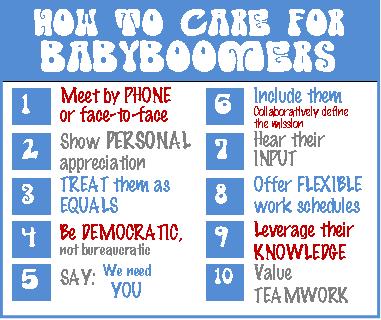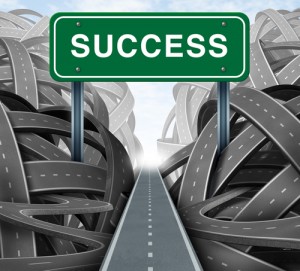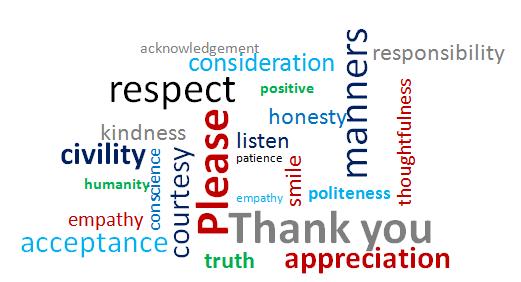As more and more pe ople of “retirement age” keep working, either for financial reasons or simply wanting to keep actively engaged, the makeup of the typical organization now spans three generations: Baby Boomers, Generation X and Generation Y/Millennials. This can present a number of challenges for team members and leaders alike as they try to figure out how to effectively interact in light of differing preferences in communication, recognition, motivation and other areas that impact the generations at work.
ople of “retirement age” keep working, either for financial reasons or simply wanting to keep actively engaged, the makeup of the typical organization now spans three generations: Baby Boomers, Generation X and Generation Y/Millennials. This can present a number of challenges for team members and leaders alike as they try to figure out how to effectively interact in light of differing preferences in communication, recognition, motivation and other areas that impact the generations at work.
Let’s start with a short refresher on these three generations, and then we’ll look more specifically at the “care and feeding” of each generation. Baby Boomers, those of “flower power” and “anti-authority” fame, were born between 1946 and 1964, and, according to AARP, make up about 38% of the workforce. Generation X, who grew up during the proliferation of personal technology, were born between 1965 and 1979. They make up about 32% of the workforce. Right behind them are the Generation Y/Millennials, born between 1980 and 2000. Millennials make up about 25% of the workforce. And no doubt you’re wondering whether the next generation is “Z”, which it is, but since they’re not working yet we’ll leave them alone for now.
Many Generation Xers, or even older Millennials may find themselves in a position of managing someone from a previous generation. If you are in that position, and the person you’re managing is a Baby Boomer, here are some tips to manage and engage with them effectively.
Pick up the phone. While you may prefer a text or instant message, Baby Boomers grew up in a workplace where people actually walked to someone’s desk or office or at least picked up the phone to have a conversation. Eye contact, tone of voice and “personal” interaction are key to them for effective communication.
Involve them. Listen to their input and leverage the knowledge they’ve developed in their years of experience. Teamwork is a core value for them. Foster teamwork and collaboration.
Recognize them. Show personal appreciation for their contributions. And don’t assume that because they are approaching “retirement age” that they aren’t interested in promotions or further development. Remember, this generation put a man on the moon!
Provide flexibility. Many in this generation are in the “sandwich” position of still raising children while caring for aging parents. Consider offering flexible work schedules, telecommuting and personal time off to handle family responsibilities.
Respect them. Baby Boomers paved the way for many of the workplace rights we now take for granted, such as equal opportunity and gender equity. Show them that they can continue to make a difference.
Next time we’ll talk about the “care and feeding” of Generation X.
Till then,
Karen
The Multi-Generational Workplace: What to Expect from Baby Boomers
-
Make the Opportunity to Say “Thank You”
Karen Colligan, Gratitude, Life, People, life, people, 0
Last month I attended the Phoenix Society’s World Burn Congress in Indianapolis, Indiana. The World Burn Congress is an...
-
Professional/Career Development – Key to Keeping Your Employees Engaged
Karen Colligan, Career, Engagement, Leadership, People, Professional development, Career, leadership, people, 0
Now would be a brilliant time for organizations to be thinking about how to engage their employees, and keep...
-
“Connecting” Your Way to Wellness
Karen Colligan, Health, Life, People, wellness, communication, health, 0
Earlier this month I was in New Jersey and Washington, D.C. with seven girlfriends I’ve known since high school....
-
Don’t Avoid that Difficult Conversation
Karen Colligan, Communication, conflict resolution, Life, Relationships, communication, people, 0
If you’ve got a difficult conversation brewing and you keep putting it off, you are not alone. According to...
-
Valuing Generational Differences
Karen Colligan, Behavioral assessments, Career planning, Development, Diversity, Engagement, leadership development, Learning, Life, Management, Mentoring, Performance, Personal development, Professional and team leadership, Succession planning, Thoughts, communication, leadership, leadership development, opportunity, personal development plan, team diversity, 0
Most workplaces today are a mix of five distinct generations – The Silent Generation, Baby Boomers, Generation X, Generation...
-
Time to Dust Off Accountability!
leedsley, Accountability, Leadership, leadership development, Management, accept the blame, communication, culture of accountability, 0
We’ve been hearing a lot about the need for accountability lately. It seems the notion got lost somewhere along...
-
The Year of Being Present – How’s It Going?
Karen Colligan, Health, Life, People, Work-life balance, health, people, 2
In January I declared 2015 “The Year of Being Present” and invited you, gentle readers, to join me. Well,...
-
Whatever Happened to “Please” and “Thank You”?
Karen Colligan, Communication, Life, People, communication, Emotional Intelligence, people, 0
Is it just me, or have you also noticed that people seem to be increasingly cranky, rude and self-absorbed...








